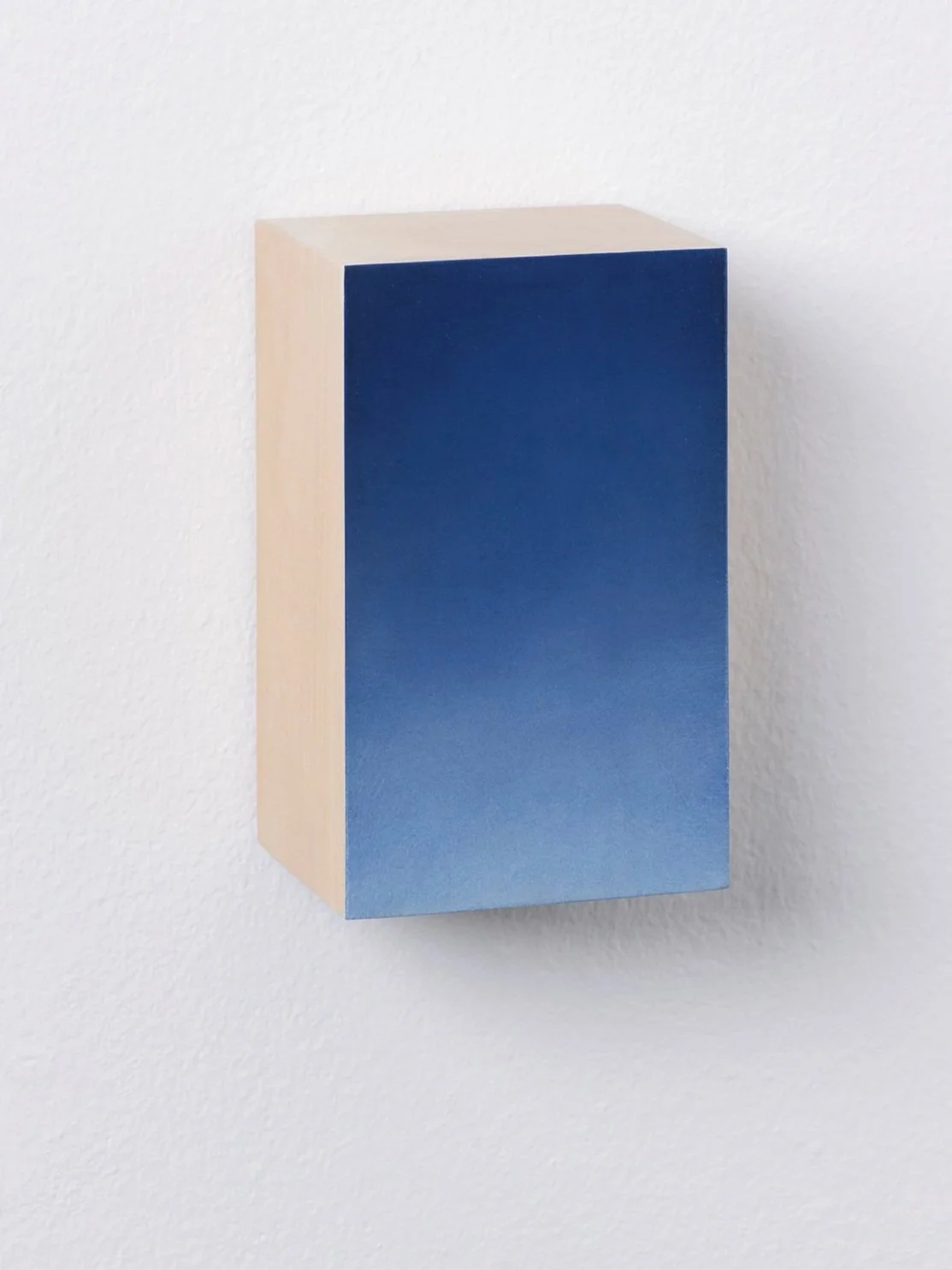
Group exhibition The Habit of Being
with Klodin Erb, Franziska Furter, Clare Goodwin, Pierre Haubensak, Mirjam Blanka Inauen, Jamie Isenstein, Koka Ramishvili and Sebastian Utzni
3 June – 15 July 2023
Wir freuen uns sehr, Sie in der Gruppenausstellung The Habit of Being zu begrüssen. In der Schau finden sich Arbeiten von sechs Künstlerinnen und drei Künstlern aus dem Galerieprogramm. Die gezeigten Arbeiten sind für die Kunstschaffenden exemplarisch – soweit dies für eine künstlerische Tätigkeit überhaupt zutreffen kann.
Im ersten Raum empfängt das grosse Gemälde Versatzstücke von Klodin Erb aus dem Jahr 2008 das Publikum. Dieses souveräne Bild beinhaltet bereits viele Elemente, die Erb in späteren Werkgruppen weiterverfolgen wird. Im gleichen Raum hängen für die Ausstellung entstandene Arbeiten von Jamie Isenstein: Vier humorvolle Sprachuhren, Mood Clock genannt, die auf unterschiedliche Gemütszustände und Wünsche in verschiedenen Zeitzonen anspielen.
Klodin Erb, Versatzstücke, 2008, Oel auf Leinwand, 250 x 200 cm
Jamie Isenstein, Mood Clock (doze, dog, doom, donut, dove, doily, doh!, bebop, slop, stop, mop, drop), 2022-23, Aluminium, Holz, Acryl, Emaille, Uhrwerk, Kunststoff, 24.1 x 24.1 x 6.4 cm
Jamie Isenstein, Mood Clock (Nothing/Everything/poppyseed), 2022-23, Aluminium, Holz, Acryl, Emaille, Uhrwerk, Kunststoff, 24.1 x 24.1 x 6.4 cm
Jamie Isenstein, Mood Clock (Half a turkey sandwich/sensible shoes), 2022-23, Aluminium, Holz, Acryl, Emaille, Uhrwerk, Kunststoff, 24.1 x 24.1 x 6.4 cm
Jamie Isenstein, Mood Clock (This/is/it), 2022-23, Aluminium, Holz, Acryl, Emaille, Uhrwerk, Kunststoff, 24.1 x 24.1 x 6.4 cm
Der Hauptraum wird von grossformatigen Arbeiten bestimmt. Die Längswand nimmt die kapitale vierteilige Serie Hommage to a Triangle von Pierre Haubensak ein. Die historische Arbeit entstand 1968 in Zürich für eine Ausstellung in der Galerie Svensk - Franska in Stockholm. Sie wurde im Folgejahr in der von Harald Szeemann kuratierten Gruppenausstellung Formen der Farbe / Shapes of Color in der Kunsthalle Bern und darauf im Stedelijk Museum in Amsterdam gezeigt.
Pierre Haubensak, Four Triangles, 1968, Dispersion auf Papier in 4 Teilen, je 40 x 46 cm
Franziska Furter produced the large-format ink drawing Every Breath You Take especially for the exhibition. It is one of a series of five drawings so far, all executed with a drawing pen. This is a device that was used especially by architects for technical drawings before Rotring pens made this writing instrument (almost) obsolete. The drawings from this group were made on the floor: Furter projected the representations of explosions from mangas onto a lying paper. She then used the drawing pen to spread the ink on the paper.
Clare Goodwin explores forms of "Constructive Nostalgia". With great precision, she produced a wall painting with spatial illusions in whose spatial structure she placed a canvas. She often titles her paintings with two first names, in this case Ron and Sue – thus Goodwin alludes to relational structures, and there the memory and construction of nostalgia is not far away.
Clare Goodwin, Wall Painting (Untitled 1), 2023, Acryl, Wandmalerei, 350 x 260 cm & Ron and Sue, 2022, Acryl auf Leinwand, 40 x 30 cm
Franziska Furter, Every Breath You Take, 2023, Tusche auf Papier, 200 x 160 cm
Mirjam Blanka Inauen unfolds her feeling for colour combinations in the large paper work M is Like a Wave 4. In a symmetrical composition, two cascades of colour rise from the centre axis of the picture and extend to the edge. The composition evokes the association of a fountain containing pools of colour – musical components are also ever present in Inauen's almost synaesthetic works.
We are showing two works by Koka Ramishvili from the Lost Landscape series. These works have their own magic. They concretise themselves in the imagination of the viewer. In their magical colourfulness, they set accents and mark moments of pause like dots in a score.
Mirjam Blanka Inauen, M is Like a Wave 4, 2023, Pigment und Acrylbinder auf Papier, 114 x 154.5 cm
Koka Ramishvili, Lost Landscape (Lazur Land) XVIII, 2018, Öl und Amber auf Holz, 17.5 x 11 x 8 cm
Koka Ramishvili, Lost Landscape (Green Dark Energy) XXII, 2018, Öl und Amber auf Holz, 17.5 x 11 x 8 cm
Anne-Lise Coste, Mondrian 8, 2015, Airbrush auf Leinwand, 46 x 38 cm
Anne-Lise Coste amazes us with adaptations of Mondrian paintings in the airbrush technique. A process diametrically opposed to Mondrian's meticulous way of working, charging his sober colour fields in primary colours with emotion.
In the rear showroom hang works that require a close-up view or an intimate surrounding space. Sebastian Utzni introduces us to his multi-layered world of images with a work from the Scandinavian Landscapes series and several works from the Forms group. The glass engraved with the image of a bed with a base gives an indication of Utzni's choice of motif. The Swedish furniture and furnishing giant IKEA names part of its collection after Scandinavian landscapes. Utzni has now depicted the landscape in the intricate colour woodcut that gives the name to the respective piece of furniture, which can be seen engraved in the glass. In the work group Forms, forms are reproduced that are used in connection with questions of migration. The writing on the forms has been removed and the sections to be filled in by the applicants have been neatly cut out with a laser. The altered forms are reminiscent of the minimalist conceptual art of Lawrence Weiner, Hanne Darboven or Sol Lewitt.
Sebastian Utzni, Forms (Registration form for pet dogs or cats accompanying refugees), 2023, Lasergeschnittener Museumskarton, gerahmt, je 29.7 x 21 cm
Sebastian Utzni, Scandinavian Landscape (Brimnes), 2023, Holzschnitt, geäztes Glas, 51.7 x 81.6 cm, Edition 3 + 1 AP



